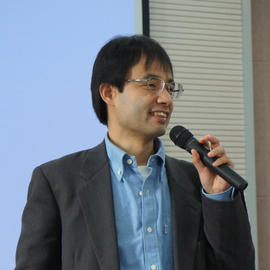I Want to Learn How to Think Beyond Academic Disciplines
Vol.6 2014.03.20 WATANABE, Masao
Disposal and Reuse of Documents in Japan
March 20-21, 2014
As represented by used paper and recycled paper, paper can be called a typical example of recycling wastes. In pre-modern Japan, too, some paper documents were remade for new pieces of paper for other writings like they would be today, while others were used for recording events or information as well as copying books from earlier eras and sacred books by using black spaces on the backside. A characteristic example of the former is shukushi, or light-gray paper that was made from used paper, and one of the examples of the latter is called shihaibunsho.
In this lecture, I will explain about the process of the making, preservation, disposal, and reuse of documents, or what kinds of documents were disposed of according to what standards in the imperial court or shogunate and how those documents were reused. Furthermore, I would like to use several case studies and think about what can be learned from things like shihaibunsho that was disposed of, reused, and thereby passed on to our era, in a somewhat similar way to how we analyze human wastes and learn about health conditions and eating habits of the past.
- Instructor
-

- WATANABE, Masao
- Associate Professor at Tokyo University's Historiographical Institute. major is history of Japanese legal system. I hope to illuminate the specific ways in which relations between the law, the system, and rights historically transformed by looking at historical sources. I am currently interested in the roles played by non-academic individuals with legal knowledge and expertise in the structural change of social order in the 14th century.
Post a Comment
- Other Lessons